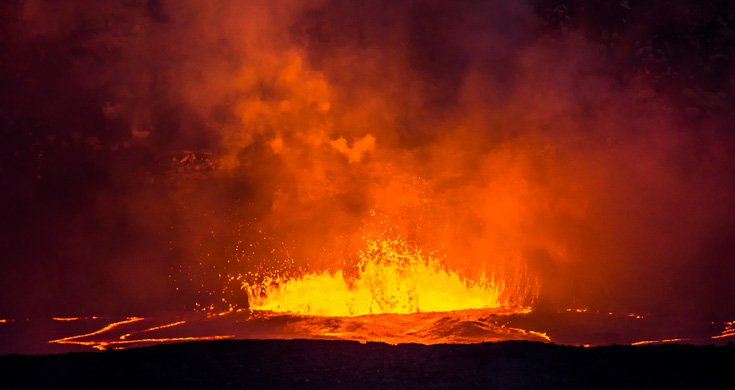Although the majority of people do not think about volcanoes on a regular basis, they are fascinating and, in some cases, dangerous. That is why volcano monitoring is so important. As scientists study rising levels of magma, they are able to better predict when a potential eruption may occur.
Hawaii’s Kilauea volcano recently made headlines when it erupted, shooting ash and smoke tens of thousands of feet up into the air. Peaking at around 30,000 feet, this volcano’s plume reached heights that were just below that of a jetliner at cruising altitude.
The Eruption of Hawaii’s Kilauea Volcano
After its eruption on May 3, the Kilauea volcano, located on Hawaii’s Big Island, has continued to erupt. As the volcano’s lava lake drained back into the ground, scientists warned that a major eruption was bound to happen. After all, this is not the first time this has occurred.
In fact, this volcano is known to be one of the world’s most active volcanoes and has been continuously erupting since 1983. At nearly 4,200 feet above sea level, it takes up approximately 14 percent of the Big Island’s land area.
Initially, the volcano erupted following a magnitude 5.0 earthquake. As lava started to spew into residential areas, mandatory evacuations began. Since then, the world has watched from afar as molten, glowing lava makes its way through neighborhoods of Lanipuna and Leilani Estates.
On May 17, another eruption occurred as anticipated—and there will likely be additional events. As stormy weather moved in, rain mixed with the ash. This created a dark paste that coated cars and rooftops in its path.
Active Volcanoes in the United States
This latest incident has people talking—especially those who live close to an active volcano. With approximately 169 active volcanoes in the United States, it is important that residents are aware of the most recent data. Although Hawaii is a volcano hotspot, most of these active volcanoes are located in Alaska—where eruptions occur on almost an annual basis.
National Geographic reports that of the 169 geographically active volcanoes in the United States, 54 have been deemed as highly threatening by the U.S. Geological Survey (USGS). The 10 most dangerous in descending order include:
- Crater Lake Volcano, Oregon
- Redoubt Volcano, Alaska
- Mauna Loa Volcano, Hawaii
- Lassen Volcanic Center, California
- South Sister Volcano, Oregon
- Mount Shasta Volcano, California
- Mount Hood Volcano, Oregon
- Mount Rainier Volcano, Washington
- Mount St. Helens Volcano, Washington
- Kilauea Volcano, Hawaii
Volcano Facts Worth Knowing
- Volcanoes are technically openings in Earth’s surface. It is when these openings become “active” that gas, magma and ash escape.
- Often located where tectonic plates meet, more than 75 percent of the planet’s volcanoes are found in the Pacific Ring of Fire (an area in the basin of the Pacific Ocean).
- Volcanoes are found on the ocean floor as well as under ice caps, including those found in Iceland.
- When a large volcanic eruption occurs, it can reflect radiation from the sun. In turn, temperatures on Earth drop around half a degree. This has occurred numerous times in the last century.
- Once a volcano erupts, this event can trigger flash floods, tsunamis, rockfalls, earthquakes, and mudflows.
Kilauea’s recent eruptions have already caused significant damage and forced many to evacuate from their homes. This event is a great learning opportunity for children of all ages, helping them better understand volcanology and geology—as well as the potential impact of such volcanic eruptions.




































